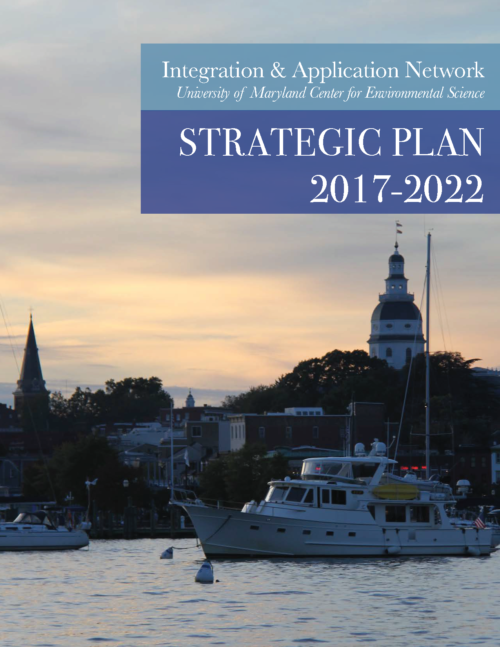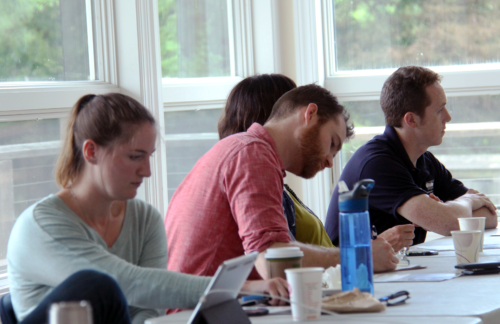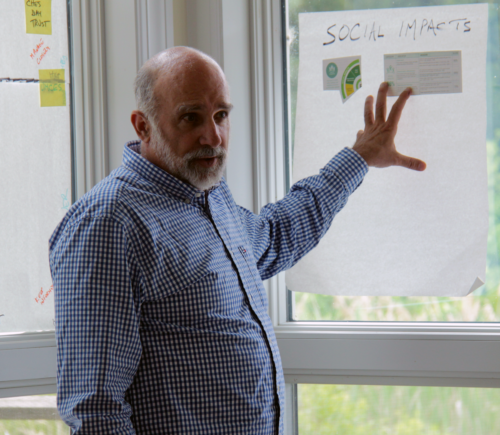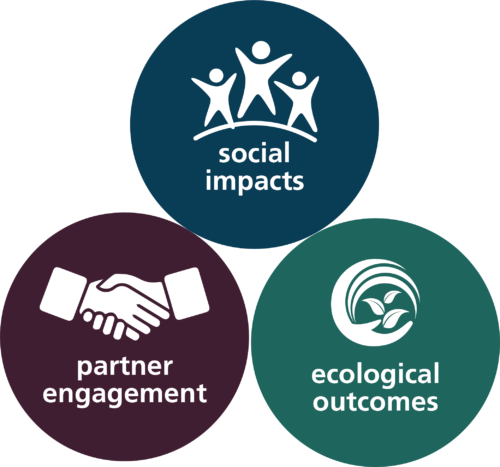IAN's First Ever Strategic Plan
Bill Dennison ·Recently, our first ever Integration and Application Network (IAN) Strategic Plan was released on IAN Press. This 16-page Strategic Plan outlines the vision, mission, and goals of the Integration and Application Network. It also identifies the IAN priorities in terms of partner engagement, social impacts and ecological outcomes.

Once we decided to create a strategic plan for IAN, we challenged ourselves to have an inclusive process without letting the effort overwhelm us. I am generally skeptical about strategic planning as it can often become more about the process of planning itself and not about strategic action decision making. I usually prefer to just work hard to improve on each project iteration.

However, there are good reasons to develop a strategic plan at this point in IAN’s trajectory. Turnover at the University of Maryland Center for Environmental Science is currently high due to a series of retirements – President Boesch’s retirement in particular. Having a strategic plan will help researchers or new IAN staff become oriented to the IAN vision, mission, and goals. In addition, the process of the development of external and introspective report cards for IAN has established a suite of goals and combined indices to assess IAN effectiveness in a variety of ways. This act of collectively developing a strategic plan may also aid in staff morale and improve our internal communication and transparency. Also, with the formation of an External Advisory Committee, a strategic plan will be helpful in giving them a better idea of our intended accomplishments.

Developing the IAN strategic plan was greatly aided by a session we conducted at the IAN retreat, discussed in a previous blog. In the retreat, we brainstormed how to improve scores for better partner engagements, social impacts and ecological outcomes. The entire IAN staff participated in this exercise, and a suite of really good ideas informed the strategic plan. Jamie Testa combined and synthesized the bits and pieces that each IAN staff contributed. I worked closely with Heath Kelsey and Bill Nuttle to draft the text, and with Jamie Testa to populate the graphics. Simon Costanzo worked with Brianne Walsh on the layout and design and most of the IAN staff contributed to the editing.

We used the strategic planning process to define our vision, mission, and values. It was helpful to define these aspects of IAN. We also reflected on our fifteen-year history and summarized it in specific phases: initiation (2002-2004), partnership (2005-2009), engagement (2010-2014), globalization (2015-present), and future (2017-). We recognized the importance of evaluation, creating both external report cards and introspective report cards to develop goals and metrics so that we can assess our progress in achieving the goals we set for ourselves.
I am happy with the IAN Strategic Plan, both in terms of the process and in terms of the final product. This team effort was accomplished without a lot of fuss, yet it represents a maturation of our shared vision and sense of mission. As the IAN crew increasingly travels the world to promote good science communication to develop better ecological outcomes, I am glad to have a solid basis of shared vision and mission.
About the author
Bill Dennison

Dr. Bill Dennison is a Professor of Marine Science and Interim President at the University of Maryland Center for Environmental Science (UMCES).